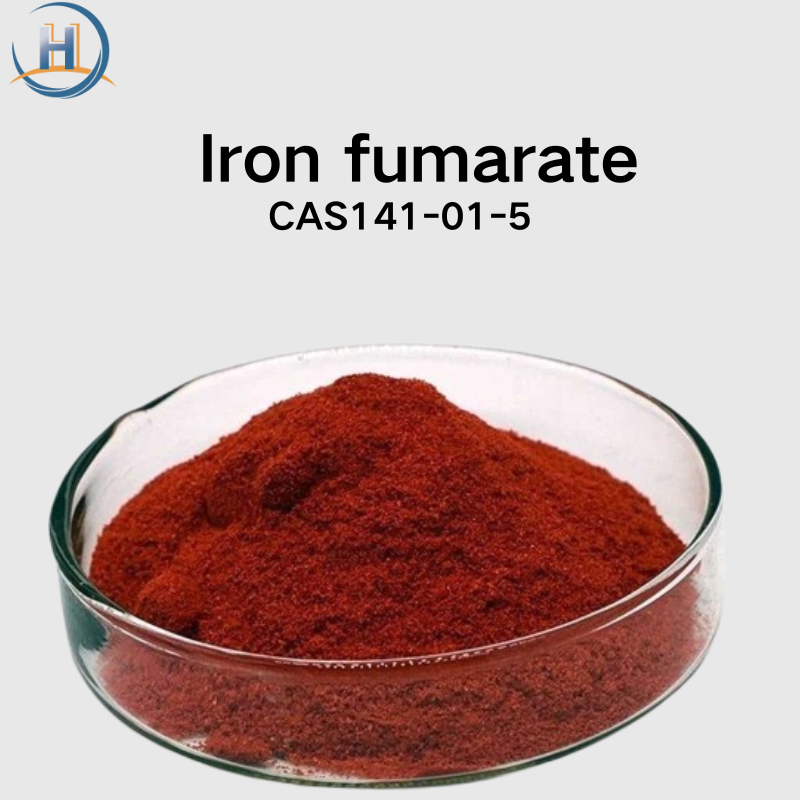-
Categories
-
Pharmaceutical Intermediates
-
Active Pharmaceutical Ingredients
-
Food Additives
- Industrial Coatings
- Agrochemicals
- Dyes and Pigments
- Surfactant
- Flavors and Fragrances
- Chemical Reagents
- Catalyst and Auxiliary
- Natural Products
- Inorganic Chemistry
-
Organic Chemistry
-
Biochemical Engineering
- Analytical Chemistry
-
Cosmetic Ingredient
- Water Treatment Chemical
-
Pharmaceutical Intermediates
Promotion
ECHEMI Mall
Wholesale
Weekly Price
Exhibition
News
-
Trade Service
Kafilzomib-R-ICE
For diffuse large B-cell lymphoma (DLBCL), first-line chemoimmunotherapy cures most patients, but relapsed/refractory (R/R) disease
occurs in about 30% of patients with DLBCL.
Patients with R/R DLBCL had poor outcomes, with only 46% of patients who were candidates for high-dose chemotherapy and autologous stem cell salvage therapy (HDC-ASCT) and 12% of patients who were not suitable for transplantation achieving long-term event-free survival
.
HDC-ASCT is the standard of standard consolidation therapy for patients with R/R DLBCL in response to second-line chemotherapy, whereas in the post-R-CHOP era, the current standard salvage chemotherapy regimens (e.
g.
, R-ICE, R-DHAP, R-ESHAP, R-GDP) used before HDC-ASCT were not optimal, and ORR and CR rates after R-ICE or RDHAP salvage therapy were 63% and 38%, respectively, initially with R-CHOP followed by salvage R-ICE or The 3-year PFS of patients with R/R DLBCL treated with R-DHAP and HDC-ASCT is only 30%.
The problem, however, is that depth of remission with salvage chemotherapy is an independent prognostic factor
for outcomes following HDC-ASCT.
It can be assumed that the addition of novel active drugs to the treatment of R/R DLBCL improves patient outcomes
.
The ubiquitin-proteasome system (UPS) plays an important role
in the acquisition resistance of rituximab and chemotherapy drugs in B-cell lymphoma.
Carfilzomib (PR-171) is a potent, tetrapeptidone epoxide-based inhibitor specific for the chymotrypsin-like active site of the 20S proteasome
.
In preclinical R/R DLBCL models, carfilzomib can overcome resistance to chemotherapy drugs, upregulate pro-apoptotic proteins, and cause dose- and time-dependent cytotoxicity
.
In light of this, Professor Francisco J.
Hernandez-Ilizaliturri of the Roswell Park Comprehensive Cancer Center hypothesized that targeting UPS with novel proteasome inhibitors (such as carfilzomib) in patients with R/R DLBCL resulted in higher ORR and CR rates and improved outcomes after HDC-ASCT, and conducted a phase I study of carfilzomib in combination with standard-dose R-ICE in patients with R/R DLBCL suitable for transplantation.
Blood Advances reports the findings
.
Study design
This is a investigator-initiated phase I/Ib, single-center, open-label, 2-part (dose escalation [Part 1] and dose expansion [Part 2]) study to investigate carfilzomib in combination with R-ICE regimens for the treatment of R/R DLLBCL
。 The primary objective of Part 1 is to evaluate the safety and tolerability of carfilzomib in combination with R-ICE and to determine the maximum tolerated dose (MTD) and the recommended extended dose (RDE), while the primary objective of Part 2 is to evaluate safety and tolerability at recommended doses, with secondary objectives including initial assessment of efficacy, feasibility of successful mobilization of autologous stem cells, and differences in clinical outcomes between GCB and non-GCB subtypes, and exploratory assessments including correlation of proteasome inhibition with baseline characteristics and outcomes
Adults (aged ≥18 years and ≤75 years) with histologically confirmed R/R CD20-positive DLBCL who have received at least one prior dose of rituximab immunochemotherapy must be suitable for HDCASCT to exclude other aggressive lymphoma histology (including translational lymphoma and Richter translation) and active CNS disease
.
Patients received carfilzomib on days 1, 2, 8, 9 (6 dose levels total) and standard doses of R-ICE on days 3-6 (Figure 1).
Repeat the cycle every 21 days before HDC-ASCT, up to a maximum of 3 cycles
.
Part 1 uses a 3+3 dose escalation design, and Part 2 assigns patients to the recommended dose level
determined in Part 1.
Study results
patient
Patient and disease characteristics are shown in Table 1
.
A total of 29 patients were included in this study, including 18 in the dose escalation phase and 11 in
the dose expansion phase.
The median age was 62 years, 62% of patients were ≥ 60 years, 55% were male, 83% Karnofsky had a performance score of > 70, 59% were stage IV, 28% were germinal center B-cell-like (GCB) subtypes, and 69% were non-GCB subtype DLBCL.
Three patients had MYC and BCL2/BCL6 rearrangements (double-hit lymphoma, DHL), and the other two had isolated MYC rearrangements
.
The median time from diagnosis to recurrence was 15.
9 months, and 31% of patients were primary refractory
.
The median prior treatment line was 1, and most patients (59%) received R-CHOP
in first-line therapy.
Fifteen patients completed treatment
according to the protocol.
Fourteen patients withdrew from the study due to the need for additional treatment prior to disease progression/HDC-ASCT (12), adverse events (1), and inadequate stem cell collection (1) (Figure 2).
security
No dose-limiting toxicity was observed at all six dose levels, and carfilzomib 45 mg/m2 was chosen as the recommended dose
for the extended phase.
The median number of cycles for C-R-ICE is 3
.
The highest AE class was 4, 3, and 2 in 76%, 7%, and 17% of patients, respectively, and no patients developed grade 5 toxicity
.
Most grade 3/4 AEs are haematological events (thrombocytopenia 72%, anaemia 52%, neutropenia 31%, lymphopenia 3%, febrile neutropenia 10%) (Table 2).
Grade 3/4 non-haematological AEs in more than one patient include hypokalemia (14%), hypophosphatemia (7%), and hypotension (7%)
.
Of particular concern associated with carfilzomib In AE, one patient developed grade 2 congestive heart failure (CHF), one patient each developed palpitations, sinus bradycardia, sinus tachycardia, and no grade 3/4 cardiac AE.
Patients with grade 2 CHF have hypertension at baseline, are treated with CFZ dose level 1, and develop CHF in cycle 1 with gastrointestinal bleeding, anaemia, and neutropenia; Complete recovery follows, left ventricular ejection fraction is preserved and subsequent cycles are well tolerated, and CHF recurrence
is absent.
efficacy
The optimal ORR for the entire cohort (n = 29) was 66%, the CR rate was 48% (Figure 3A), the ORR at the end of treatment (EOT) was 62%, and the CR rate was 48%.
Among the 14 patients treated with the recommended extended dose of carfilzomib (45 mg/m2), the optimal ORR and CR rates were 71% and 50%, respectively, and the EOT was consistent
。 There is a strong correlation between cellular origin (COO) and ORR, with most responses (17/18, 94%) occurring in the non-GCB phenotype (p= 0.
001): ORR was 17/20 (85%) in patients with non-GCB DLBCL, 1/8 (13%) in patients with GCB DLBCL, 65% in patients with non-GCB DLBCL, and 13% in patients with GCB DLBCL (Figures 3A and 3B).
One patient with PMBL did not respond and had a low response to C-R-ICE in patients with primary refractory disease, with an ORR of 1/9 (11%) compared with 17/20 (85%) (p=0.
001)
in patients with relapse.
Similarly, patients with disease recurrence within 12 months of diagnosis had a lower ORR (3/11, 27%) (p=0.
019)
compared with those who relapsed 12 months after diagnosis (15/18, 83%).
ORR is not associated with age, sex, KPS at diagnosis, stage, bone marrow involvement, extranodal disease, IPI score, or double-hit status; Due to the limited data available, it is not possible to assess the relationship between
ORR and dual expression states.
Fifteen (52%) patients underwent autologous stem cell transplantation
.
Reasons for delayed transplantation include disease progression (6), inadequate remission (total7; PR 3, SD 4) and insufficient stem cell collection (1).
The median number of days required for collection is 3 days
.
Of the 15 patients who received HDC-ASCT, 13 had CR, one had PR, and one had SD
before transplantation.
All 13 patients with pre-transplant CR maintained remission
at day +100.
Of the 14 patients who achieved CR at the end of treatment with C-R-ICE, 3 had disease relapse
.
Interestingly, one patient who achieved CR but was unable to receive HDC-ASCT due to inadequate collection maintained CR
at the last follow-up.
At the time of the data, 14 patients had died, all of whom had died from disease progression
.
The median follow-up was 40 months, with a median PFS of 15.
2 months and a 1-year PFS of 55% (Figure 4A).
The median OS was 22.
6 months and the 1-year OS was 66% (Figure 4B).
Among patients who achieved CR at the end of treatment, the median PFS was 16.
6 months, OS was 16.
6 months, 1-year PFS was 64%, and 1-year OS was 71%.
Achieving CR with optimal response was significantly associated with
PFS (p< 0.
0001) and OS (p< 0.
0001) prolongation.
Similarly, achieving CR at the end of treatment was significantly associated with
prolongation of PFS (p< 0.
0001) and OS (p= 0.
0006).
Patients with non-GCB DLBCL had significantly longer PFS (NR vs 6.
6 months, 1-year PFS 65% vs 38%, p=0.
0001) and OS (NR vs 6.
6 months, 1-year OS 80% vs 38%, p< 0.
0001) significantly longer than those with GCB DLBCL (Figure 4C-D).
In addition, the presence of primary refractory disease or recurrence within 12 months of diagnosis was also associated with a significant reduction in PFS and OS, consistent
with remission data.
conclusion
In this Phase 1 study of carfilzomib plus R-ICE regimen for the treatment of R/R DLBCL, the authors demonstrated that the addition of carfilzomib to R-ICE was well tolerated, did not increase toxicity, and did not exceed the expected adverse event profile
of R-ICE.
Carfilzomib 45 mg/m2 was chosen on days 1, 2, 8, and 9 as the recommended dose
for the expansion phase.
Across the cohort, the ORR was 62%, the CR rate was 48%, the median PFS was 15.
2 months, and the median OS was 22.
6 months; the non-GCB cohort appeared to benefit more from the C-R-ICE regimen than the GCB cohort, with an ORR of 85% and a CR of 65%.
In addition, patients with primary refractory disease or those with relapse within 12 months of diagnosis who continue to perform poorly and have a shorter survival should be considered for alternative therapies such as CD19 CART cell therapy
.
In this study, patients with GCB-DLBCL (63%) had a higher proportion of primary refractory disease compared to patients with non-GCB DLBCL (15%), which explains the lower response rate in
GCB-DLBCL.
References
Pallawi Torka,et al.
Carfilzomib Combined with Rituximab, Ifosfamide, Carboplatin, and Etoposide for Relapsed or Refractory DLBCL.
Blood Adv .
2022 Nov 14; bloodadvances.
2022008543.
doi: 10.
1182/bloodadvances.
2022008543.







